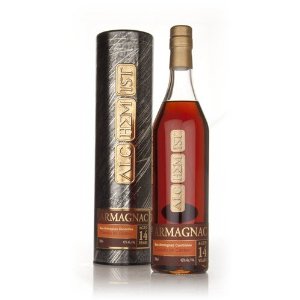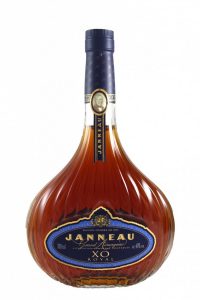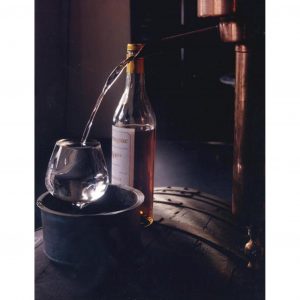Armagnac
French wine distillate A.O.C. (Appellation d'Origine contrôlée) produced in the Armagnac region in Southwest France, delimited in 1909 by a decree of the President of the Republic of France Armand Fallieres, which is divided into three production areas: Bas-Armagnac (S. Bas-Armagnac) (Grand Bas-Armagnac, Moyen Bas-Armagnac, Bas-Armagnac Petit), Haut-Armagnac (S. Haut-Armagnac) and Ténarèze (S. Ténarèze). The wines from which comes the distullate derive mainly from four grapes: Ugni blanc (with that name in France it is known the Italian Trebbiano, introduced during the low-medieval age), the Colombard, the Folle Blanche (also called Picpoule) and Baco blanc. The quality of a distillate, in fact, is to be found first of all in the phase of fermentation and for the Armagnac the most suitable grapes are just a little aromatic not to contaminate the aromas of fermentation. The ideal vines are those that give wines with low alcohol content and high acidity. The Armagnac seems to be the oldest wine spirit in the world. One document dated 1411 writes about a man, named Antoine, who became famous in Toulouse with his brilliant ability to be a distiller of wine, with which produced his Aygue ardente or aygordent: acqua ardente (burning water). In one manuscript written in the Gascon dialect of the same year, known as the Manuscript of Auch, Armagnac is referenced in a note: "... it brightens up the wit and joy ....". In 1431 the will of the Earl of Vic-Fezensac speaks about "casks" and a "press" showing the importance of wooden barrels and, in particular, their action in the maturation of a distillate. The distillation, which is always made during the winter, takes place in special stills called shelved or Armagnacais, in which the alcoholic wine vapors pass through the shelves from the bottom up. The obtained spirit is placed in new black oak casks with the capacity of 400-420 liters and put to rest in the cellars at a temperature of about 15°C, with every year of aging a quantity of evaporated product varies from 3 to 7%, called "quote for the angels". After the aging period, the product is packaged in 2 liters capacity flask bottles, called "cruchon", or in 75cl capacity bottles, called "cruchette" (water bottle). The age of Armagnac is deduced from the following descriptions: V.S. (Very Superior) or Trois Etoiles (Three Stars), if the youngest spirit used for assembly is aged up to four and a half years; V.S.O.P. (Very Superior Old Pale), V.O. (Very Old) or Reserve, if the youngest spirit is aged between four and a half and six and a half years; Vieille Reserve (Old Reserve), Grande Réserve (Grand Reserve), Royal, Vieux (Old), X.O. (Extra Old), Napoleon, if the youngest spirit is aged more than six and a half years; Hors d'Age and Paradis may be used in cases where the youngest spirit is aged more than six and a half years, however, are often used for Cognacs that have over fifty years of age; can also be vintage Armagnac, when the assembly should be done with products from the same vintage.




